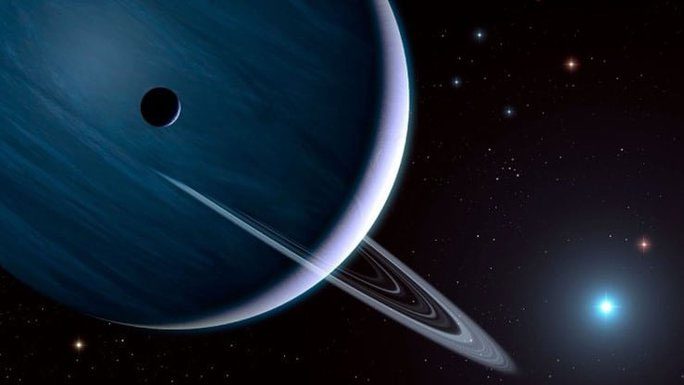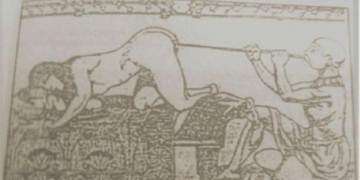A blue monster passing by, tearing Earth from the Solar System and turning it into a permanent prisoner? This incredible scenario has actually occurred with a series of other planets.
A research team led by Dr. Richard Parker from the Department of Physics and Astronomy at the University of Sheffield, UK, has proposed a new model explaining the formation of a type of star system that has puzzled scientists for many years.
These are the strange worlds of Type B blue stars, which have masses at least three times that of our Sun, are extremely hot, and emit ultra-strong ultraviolet radiation. The hottest stars always exhibit a blue hue, transitioning to red as they become “cooler”, thus this type of star is referred to as “monsters”, ranking second in the stellar world, only surpassed by the “deep blue” Type O stars, which weigh at least 16 times more than the Sun.

Graphic depicting a “monster family” with a blue star and a giant gas planet, both of which are very large and powerful – (Photo: UNIVERSITY OF SHEFFIELD)
In comparison, our Sun is a yellow G-type star, ranking fifth in the seven-tier stellar classification.
Many blue stars possess a peculiar feature: a gas giant planet similar to Jupiter – a planet with a mass 318 times that of Earth – but located very far away, at hundreds of astronomical units (AU) from their parent star. One astronomical unit is the distance from the Sun to Earth.
According to SciTech Daily, the research team focused on this unusual distance and another perplexing issue: the excessive ultraviolet radiation from these blue “monsters” would prevent the formation of giant gas planets in their protoplanetary disks.
The Sheffield scientists examined various scenarios to indicate the only possible solution: they must be stolen planets, referred to as “BEAST”, an acronym for “Research on Exoplanets Abundant Around Type B Stars”, but can also humorously be interpreted as “monsters.”
“Essentially, this is a case of planetary theft. We used computer simulations to demonstrate that the stealing or capturing of these BEASTs occurs, on average, once every 10 million years during the evolution of a star nursery.”
There are two types of theft. One is that these super-strong stars pass through another star system and capture the “offspring” of weaker stars – not tiny planets like our Earth, but giant planets that are “monsters” in the planetary realm, fitting their new “monster” mother.
The second type involves them abducting “wandering planets”, also known as “failed stars,” which astronomically are called brown dwarfs. Brown dwarfs are much larger than planets but too small compared to stars, lacking the capability to sustain nuclear fusion in their cores, and are often solitary in the universe.
Regardless of the method of abduction, these strange planets and how they came to belong to a star system with a “mother” that is a blue star represent a new addition to the collection of various star system types, showcasing incredible diversity.
This research was recently published in the scientific journal Monthly Notices of the Royal Astronomical Society.





















































